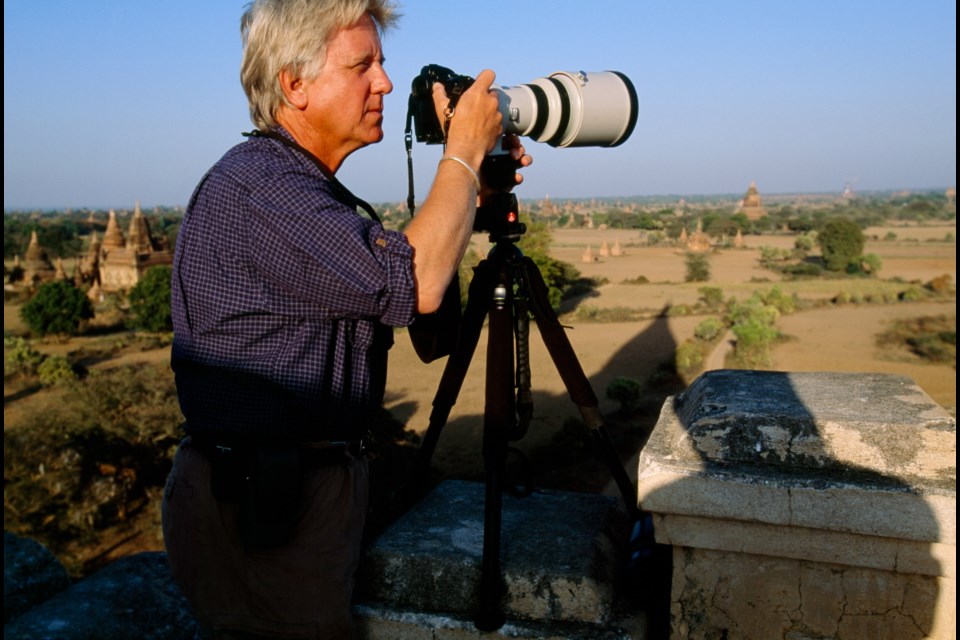ON STAGE
What: National Geographic Live — On the Trail of Big Cats
Where: The Royal Theatre
When: Wednesday, Jan. 29, 7 p.m.
Tickets: $37.50-$44.50 from the Royal McPherson box office (250-386-6121) or rmts.bc.ca
There’s often a sense of fear when it comes to “big cats,” the catch-all term used to describe tigers, lions, jaguars and leopards.
But much of that fear is unwarranted, according to award-winning photographer Steve Winter, who has shot some of the most iconic images of tigers in history.
The perception of danger comes from two specific instances, Winter said: the man-eating lions of Tsavo, Kenya, that killed a number of railway workers in 1898, and the leopard of Rudraprayag, India, which was said to have killed 125 people in the 1920s.
Those cats’ pattern of behaviour makes them outliers, not the norm, he said. “We haven’t been part of their image search as far as food goes for millennia,” Winter said recently from his home in New Jersey. “But there’s always those incidents of wrong place and wrong time, when we run into each other.”
Winter will talk about these and other photographic pursuits in his career with National Geographic during On the Trail of Big Cats, his slide presentation and talk at the Royal Theatre next week. He will also focus on the precarious status of some of theanimals, which was documented in his 2013 book Tigers Forever: Saving the World’s Most Endangered Cat, which he co-authored with his wife, photojournalist Sharon Guynup.
The couple wrote and shot photos for a feature story, The Tiger Next Door, that appeared in the December issue of National Geographic. The investigation into captive tigers in the U.S., which now outnumber those in the wild, produced more than a few jaw-dropping statistics.
One of the most dramatic — that fewer than 4,000 tigers remain in the wild, down from 100,000 at the turn of the 20th century — will no doubt be a point of discussion in Winter’s multi-media presentation. “We try to do things that have a tangible result,” Winter said. “Teach people about it, and maybe influence people to make some changes.”
One of the places they visited while doing research for the article was the Safari Sanctuary in Broken Arrow, Oklahoma. Winter was taking photos of a 275-pound lion-tiger cross named Langley when it charged at him. He narrowly escaped, but Winter can be seen in the harrowing video laughing it off seconds after the incident. The clip went viral on Dec. 30, setting social media on fire, though an element of caution underscored the clicks and likes: Had the lion-tiger cross been full-grown, rather than 18 months old, Winter would not be alive to tell about it.
“A lot of people love house cats; this is just a bigger version,” the native of Fort Wayne, Indiana, said with a laugh, clearly having been through worse in his professional career. “Beautiful and powerful, they give you a sense of awe concerning nature. When you look in a tiger’s eyes, you can disappear. It’s hard for me to put it in words. This is something you need to be there and witness yourself.”
Through his lens, the public has come to see not only the beauty of big cats, but also the tenuous situation of their natural habitat.
Winter, 62, did not take a photo of an animal until he was 34, but has become one of the most well-known wildlife photojournalists and conservationists in recent memory.
He was the subject of more social-media buzz when National Geographic posted on its Instagram account last week a dramatic picture of a lioness named Naturinda that bore the bloody scar of a poacher’s snare. The picture has been “liked” nearly 2.3 million times to date.
Winter said he isn’t concerned with the status and acclaim that resulted from taking such a shot (though he did have a chuckle when actor Reese Witherspoon “liked” it).
He cares more that photography has become so in-demand, and how that could be turned into a positive.
National Geographic, with 130 million Instagram followers, is a force to be reckoned with on social media, one that Winter said is more powerful in that arena than Nike.
“It gives you hope. People are looking at other people, other places, other cultures. How did a picture of an injured animal get 2.2 million likes in 24 hours? People have empathy. And if we can have empathy toward animals, maybe we might find it for each other. And wouldn’t that be great, the way things are going now?”



